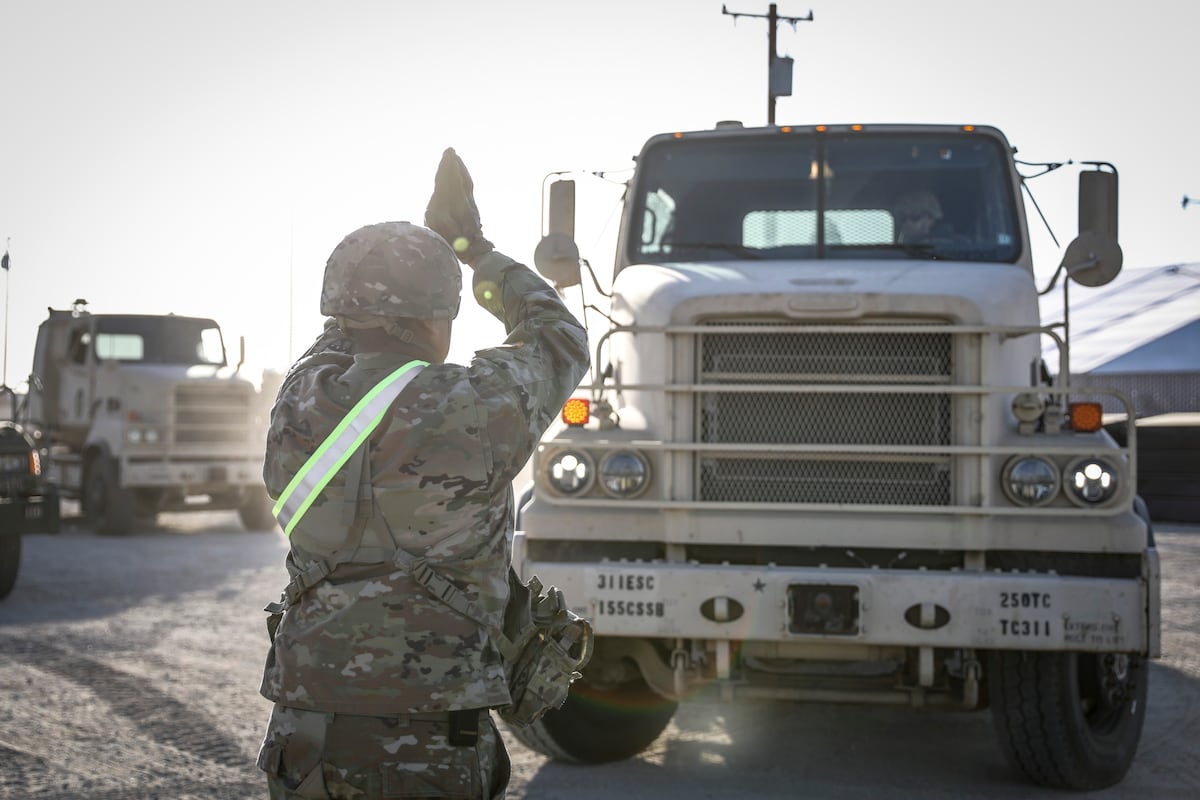The Russia-Ukraine war has been a drone operator’s dream and a quartermaster’s nightmare. Supply trucks and depots have been pounded by a nearly endless stream of drones and long-range munitions. Resupply of front-line units means running a gauntlet of fire.
For the first time since World War II, U.S. Army logisticians must contemplate a grim future where supply units no longer have the luxury of assuming that the Air Force can shield them from aerial threats. Nor that being behind the front lines will keep them safe from enemy bombardment.
“The assumption that logistics operates in the safety of a rear area is no longer valid,” Capt. Stephanie Torres told Defense News. “Sustainment formations are targeted with the same precision and lethality as maneuver units.”
“These units must train for survivability, move like maneuver formations and plan for deception and concealment, not just the technicalities of distribution of material.”
Supply units need to think like combat units, argued Torres, an experienced logistics officer, in a recent essay for Army Sustainment magazine. She pointed to the omnipresent drone swarms that have turned the Ukraine battlefield into a vast kill zone that extends 20 miles or more beyond the front line.
“Russian forces have repeatedly ambushed Ukrainian supply columns with coordinated drone surveillance and rapid sensor-to-shooter strikes, destroying logistics elements with lethal efficiency,” Torres wrote. “Russian units have learned to wait patiently in concealed positions, exploiting the kill web to obliterate convoys before they reach the front lines.”
Just as Ukrainian and Russians troops have painfully learned, U.S. Army supply units will have to assume that drones are always prowling overhead, and that disclosing their location by chatting too much on the radio will get them targeted by a missile strike.
“Sustainment nodes must reduce their electromagnetic and physical signatures to survive in an environment saturated with sensors,” Torres wrote. “This means minimizing radio transmissions, employing camouflage and decoys, limiting tentage, and using low-signature platforms to deliver and store supplies.”
Even logistics training has to be overhauled.
“Combat training centers must expose sustainers to contested logistics environments, complete with persistent drone surveillance, precision fires, and denied communications,” wrote Torres, who now serves Secretary of the General Staff for First Army Division West.
For sustainment troops to have defensive capabilities equivalent to maneuver units, they are going to need similar equipment.
Embedded counter-unmanned aerial systems in sustainment formations will be critical for defending supply units against drone and missile strikes, wrote Torres.
Yet counter-drone assets, such as machine guns and jammers, will inevitably be in short supply. Do combat units or supply units get priority?
“Counter-UAS systems and mobile protection platforms are limited and typically prioritized for maneuver units,” Torres explained to Defense News. “But here’s the reality: If logistics fails, our operations lose longevity. We can’t afford to ignore survivability for sustainers.”
The Army logistics system needs to evolve from fixed, vulnerable hubs to dispersed, autonomous nodes dispatching mobile sustainment teams “that displace frequently, adapt quickly, and align with maneuver formations,” Torres argued in her essay. Supply convoys must be flexible, responsive as maneuver units constantly shift their locations and timed to coincide when the chance of detection by enemy intelligence, surveillance and reconnaissance is low.
However, logistics units can also protect themselves — and support maneuver forces — simply by being more efficient at their jobs. For example, excess inventory stored in vulnerable depots near the front could be shipped back to the rear every day, perhaps loaded on returning supply trucks. This includes unneeded construction materials and spare parts or even extra rations.
“I’ve seen firsthand how excess inventory can become a burden, and significantly impact mobility,” said Torres, who served in Afghanistan and Iraq. “These experiences taught me that flexibility and speed are vital to sustainment operations.”
The Army can learn best practices from the commercial world, especially just-in-time logistics, said Torres, who has an MBA degree. Artificial intelligence and predictive analytics can reveal patterns, while decentralized fulfillment — which companies like Amazon use — can improve efficiency.
“In tactical operations, these translate into lean logistics,” Torres said. “Leaner footprints in contested environments promote agility, and agility produces higher chances of survival.”
In the end, “commanders must ask themselves hard questions,” Torres wrote. “Can our formations displace under threat? Are we retrograding supplies daily? Do we train to sustain under fire?”
Read the full article here








